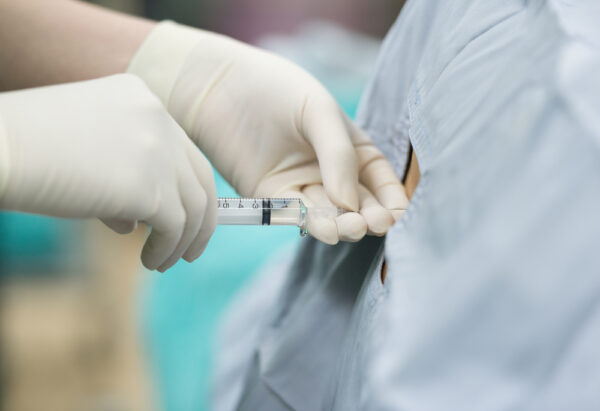This content was reviewed by Stephen Garber, MD, Anesthesiologist in Southern California.
Post-dural puncture headaches (PDPH) are a widely recognized complication of spinal and epidural anesthesia, yet its prevalence remains a concern in modern anesthesiology. Characterized by debilitating headaches, PDPH can prolong hospital stays, increase reliance on pain management interventions, and significantly impact patient experience.
Clinicians have long sought to balance procedural efficacy with PDPH mitigation. Innovations in needle technology, imaging guidance, and updated procedural training have shown promise in reducing PDPH incidence in clinical trials and structured programs, but opportunities remain for further improvement. By analyzing the latest trends in prevention, treatment, and clinical decision-making, we can refine best practices and optimize patient outcomes in neuraxial anesthesia.
Pathophysiology of PDPH
Mechanistically, PDPH results from CSF leakage through the dural puncture site. Loss of CSF volume decreases intracranial pressure, leading to traction on pain-sensitive intracranial structures such as the meninges and bridging veins, which contributes to the characteristic headache. Compensatory cerebral vasodilation often intensifies symptoms like photophobia and nausea. While this model is widely accepted, ongoing research continues to explore the relative contributions of these mechanisms.
Risk factors for PDPH:
- Needle gauge and tip design: Larger gauge and cutting-tip needles increase the likelihood of CSF leakage. Atraumatic pencil-point needles reduce that risk by separating rather than cutting dural fibers.
- Patient-specific factors: Younger patients, particularly women in the obstetric population, are at increased risk of PDPH. While the exact mechanisms are not fully understood, contributing factors may include higher CSF pressure, greater sensitivity to intracranial pressure changes, and differences in dural tissue structure.
- Body Mass Index (BMI): Obese patients may pose additional challenges due to difficulties in needle placement and identification of neuraxial landmarks, but they may have a lower risk of PDPH due to increased epidural fat, which limits CSF leakage.
- Multiple puncture attempts: Repeated dural punctures or failed catheter placements increase PDPH risk and can complicate management.
- Connective tissue disorders: Ehlers-Danlos syndrome and similar conditions that alter tissue consistency may cause increased dural fragility, making patients with connective tissue disorders more prone to CSF leaks and persistent headaches.
Not all patients face equal risk. Questions remain about why PDPH severity varies significantly between individuals and which factors most directly contribute to the pain experience. The interplay of anatomical and procedural complexity underscores the need for adaptive approaches. And understanding the underlying mechanisms helps contextualize why even minor refinements in technique or needle design can yield measurable reductions in PDPH incidence.

Preventive strategies and clinical best practices
Effective PDPH prevention hinges on getting the procedure right the first time. This involves not just selecting the correct needle but adopting evidence-based protocols, standardized practices, ongoing clinician training, and ultrasound imaging guidance.
- Needle selection: Pencil-point spinal needles consistently demonstrate lower PDPH rates than cutting-tip alternatives. Their design spreads dural fibers rather than cutting them, promoting better closure and less CSF leakage.
- Patient positioning: Accurate alignment of spinal anatomy, particularly in patients with complex body types, can improve first-pass success rates and minimize complications.
- Traditional ultrasound imaging: Ultrasound-assisted spinal and epidural anesthesia can improve accuracy, particularly in patients with difficult anatomy, reducing the need for multiple needle passes. High learning curves and limited equipment accessibility might hinder its adoption for neuraxial procedures.
- AI-assisted ultrasound imaging: AI-assisted neuraxial imaging has the potential to enhance landmark identification and allow anesthesiologists to position the probe for optimal insertion angles. Further studies are needed to establish its impact on reducing dural puncture risk.
- Clinical training and simulation: Standardized protocols and simulation-based training improve procedural consistency and reduce operator-dependent variability.
- Protocol standardization: Hospitals that implement structured, protocol-driven neuraxial anesthesia programs — especially those standardizing the use of pencil-point needles and simulation-based training — have demonstrated statistically significant reductions in PDPH rates.
Clinicians should remain cautious of assuming that ultrasound alone solves the problem. Not all ultrasound systems are equally usable for neuraxial anesthesia. The value of ultrasound guidance lies in its design specificity, automation, ease of integration, and usability across experienced and novice clinicians.
These distinctions matter, especially when procedural efficiency and risk reduction are equally high priorities. Combining proven techniques with accessible, neuraxial-specific tools positions us for greater success in both preventing PDPH and optimizing the overall patient experience.

Innovations and post-procedure management
Post-procedure PDPH management has traditionally relied on general supportive measures like bed rest and fluids. However, evidence now shows these do little to address the actual cause of pain. Evolving pharmacologic and interventional treatments offer more meaningful results, particularly in cases where prevention has failed.
- Bed rest and hydration: These historically recommended interventions may provide temporary symptom relief, but recent studies suggest limited long-term benefits in PDPH resolution.
- Pharmacologic treatments: Gabapentin has demonstrated varying degrees of effectiveness in small studies for PDPH management, targeting neuropathic pain pathways. And caffeine is thought to alleviate PDPH symptoms in the short-term by inducing cerebral vasoconstriction.
- Epidural Blood Patch (EBP): EBP remains the most reliable treatment for persistent PDPH. By injecting autologous blood into the epidural space, a clot forms that seals the dural defect and restores CSF volume and pressure.
- Emerging materials: Fibrin glue is being studied for patients unresponsive to EBP, though further validation is required.
While EBP remains the gold standard, its success is tied to procedural timing and technique. That makes it even more important to reduce the need for rescue interventions in the first place. If clinicians can avoid multiple punctures or failed attempts using AI-guided imaging tools, fewer patients will require follow-up procedures.
How can we join forces to confront PDPH?
The anesthesiology community has made significant strides in PDPH prevention, yet ongoing advancements in technology and clinical protocols continue to shape best practices. From optimizing procedural techniques to leveraging AI and ultrasound for enhanced precision, the future of neuraxial anesthesia is evolving toward lower PDPH incidence and improved patient recovery.
For clinicians, researchers, and medical educators, staying informed and proactive is essential. As new evidence emerges, collaboration across specialties will further refine our approach to PDPH prevention and management, ensuring that patient care remains at the forefront of anesthetic innovation.
